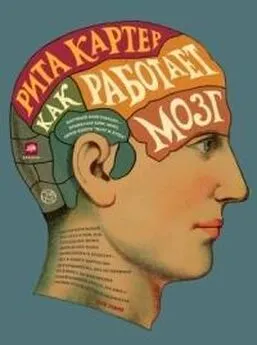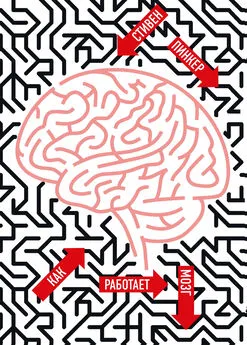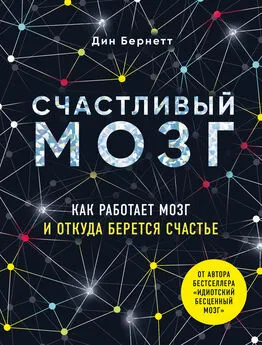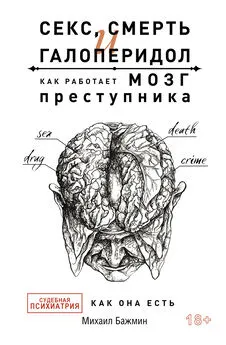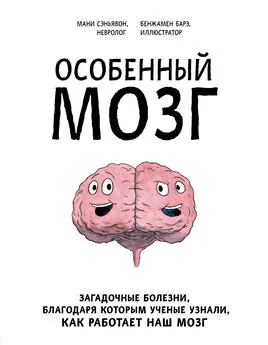Рита Картер - Как работает мозг
- Название:Как работает мозг
- Автор:
- Жанр:
- Издательство:неизвестно
- Год:2014
- ISBN:нет данных
- Рейтинг:
- Избранное:Добавить в избранное
-
Отзывы:
-
Ваша оценка:
Рита Картер - Как работает мозг краткое содержание
Как работает мозг - читать онлайн бесплатно полную версию (весь текст целиком)
Интервал:
Закладка:
14 Интернет-сайт Prosopagnosia.
15 McNeil, J. E., and E. K. Warrington Prosopagnosia: a reclassification II Quarterly Journal of Experimental Psychology 43A: 2 (1991), pp. 267-287.
16 SHALLICE, T. From Neuropsychology to Mental Structure. Cambridge University Press, 1989, p. 390.
17 Gianotti, G. Face familiarity, the right temporal lobe and the possible underlying neural mechanisms /I Brains Research Reviews 56 (2007), pp. 214-235.
18 Blount, G, Dangerousness of patients with Capgras syndrome II Nebraska Medical Journal 71 (1986), p. 207.
19 Canli, T. Functional brain mapping of extraversion and neuroticism: learning from individual differences in emotion processing /1 Journal of Personality 72 (2004), pp. 1105-1132.
20 Ramachandran, V. S., and E. L. Altschuler The use of visual feedback, in particular mirror visual feedback, in restoring brain function // Brain 132 (2009), pp. 1693-1710.
21 Melzack, R. Phantom limbs and the concept of a neumma-trix II Trends in Neurosciences 13 (1990), pp. 88-92.
22 Melzack, R. Phantom limbs II Scientific American Supplement, 7:1 (1997), p- 84.
23 ROSE, S. The Making of Memory: From Molecules to Mind. London, Bantam Press, 1993, p. 103.
24 Schatzman, M. The Story of Ruth. London, Gerald Duckworth, 1980,
25 Sacks, O. The Man Who Mistook His Wife for a Hat. New York, Summit Books, 1985, p. 135.
26 Frith, C. D. Functional imaging and cognitive abnormalities // The Lancet 346: 8975 (1995), pp. 615-620.
27 Franzini, L. R., and J. Grossberg (eds.) Eccentric and Bizarre Behaviours. New York, John Wiley, 1995.
28 SiEVEKING, P. Then I saw her face II Sunday Times, 2 November 1997.
29 Д. Вестерн и др. (Университет Эмори), доклад на Ежегодной конференции общества личностной и социальной психологии, 28 января гооб года.
Глава 6. Как преодолеть пропасть
1 Sacks, О. Seeing Voices. London, Picador, 1991, p. 40.
2 Konopka, G., ET AL. Human-specific transcriptional regulation of CNS development genes by FOXP2 II Nature 462 (2009), pp. 213-217.
3 Battey, J. F., ET AL. Words, gestures are translated by same brain regions // PNAS (2009).
4 Finn, R. Different minds II Discover (June 1991), pp. 55-58.
5 Lenhoff, H. M., Wang, P. P., Greenberg, F., and U. Bellugi Williams syndrome and the brain II Scientific American 277: 6 (1997), pp. 68-73.
6 Keysers, C, et AL. A touching sight: SH/PV activation during the observation and experience of touch // Neuron 42: 2 (2004), pp. 335-346.
7 Iacoboni, M., ET AL. Grasping the intentions of others with one's own mirror neuron system 11 P\oS Biology 3 (2005), pp. 1-7.
8 Frith, U. Autism II Scientific American 268: 6 (1997). pp. 108-114.
9 Dapretto, M., et al. Understanding emotions in others: mirror neuron dysfunction in children with autism spectrum disorders II Nature Neuroscience 9:1 (2006), pp. 28-30.
10 Hadjikhani, N., et AL. Activation of the fusiform gyrus when individuals with autism spectrum disorder view faces II Neurolmage 22 (2004), pp. 1141-1150.
11 Fletcher, P., et al. Other minds in the brain — afunctional imagingstudy II Cognition 57 (i995). РР-109-128.
12 Baron-Cohen, S. Is there a language of the eyes? II Visual Cognition 4: 3 (1997). PP. 3«-33i-
13 Wing, L. The autistic spectrum //The Lancet 350:9093 (1997), p. 1762.
14 RATEY, J. J., AND C. JOHNSON (EDS.) Shadow Syndromes. London, Bantam Press, 1997, p. 230.
15 Olsho, W. Infant frequency discrimination I/ Infant Behaviour and Development 7 (1984), pp. 27-35.
16 Яаак Панксепп. Цит. по: New Scientist, Emotions supplement, 150: 2027 (1996).
17 North, A. C, et al. In-store music affects product choice II Nature 390: 6656 (1997), p. 132.
18 Strait, D., Kraus, N., Skoe, E., and R. Ashley Musical experience promotes subcortical efficiency in processing emotional vocal sounds I/ Annals of the New York Academy of Sciences 1169 (2009), pp. 209-213.
19 Gazzola, V, Aziz-Zadeh, L., and C. Keysers Empathy and the somatotopic auditory mirror system in humans 11 Current Biology 16 (2006), pp. 1824-1829.
20 Bangert, M., et al. Shared networks for auditory and motor processing in professional pianists: Evidence from fM RI conjunction II Neurolmage 30 (2006), pp. 917-926.
21 Мамре, В., Friederici, A. D., Christophe, A., and A. Wermke Newborns' cry melody is shaped by their native language II Current Biology 19: 23 (2009), pp. 1994-1997.
22 Ojemann, G.A. Subcortical language I In: Whitaker, H. A. (ED.) Studies in Neurolinguistics, vol. 1. New York Academic Press, 1976; Donnan, G. A., ET al. Identification of brain region for coordinating speech articulation I/ The Lancet 349: 9047 (1997), p. 221; BINDER, J. R., ET AL. Human brain areas identified by fMRI II Journal of Neuroscience 17:1 (1997). PP- 353-362.
23 Bishop, D. V M. Listening out for subtle deficits I/ Nature 387:6629 (1997), p. 129.
24 Beaumont, J. G. (ed.) The Blackwell Dictionary of Neuropsychology. Oxford, Blackwell, 1997-
25 Parkin, A.J. Explorations in Cognitive Neuropsychology. Oxford, Blackwell, 1996, p. 133.
26 Goodglass, H., and D. Kaplan The Boston Diagnostic Aphasia Examination. Philadelphia, Lea and l-'ebiger, i')Ki.
27 Kinsbourne, M., and Е. К. Warrington Jargon aphasia II Neuropsychologia i (1963), pp. 17-37.
28 Temple, С The Brain. Harmondsworth, Penguin Books, 1993- P- 9°-
29. Kosslyn, S. M., and O. Koenig Wet Mind: The New Cognitive Neuroscience. New York, Free Press, 1992.
30 Lambon Ralph, M. A., Sage, К. Е., and A. W. El-Ll s Word meaning blindness: a new form of acquired dyslexia // Cognitive Neurology 13: 5 (1996), pp. 617-639.
31 Paulf.SU, E., ЕТ al. Is development dyslexia a disconnection syndrome? I/ Brain 119 (1996), pp. 143-147.
32 Donaldson, M. Human Minds: An Exploration. Har-mondsworth, Penguin Books, 1992.
33 RymF.r, R. Genie: A Scientific Tragedy. Harmondsworth, Penguin Books, 1993.
34 Sacks, O. Seeing Voices. London, Picador, 1991.
3$. KlM, K. H. S., ET AL. Distinct cortical areas associated with native and second languages II Nature 388: 6538 (1997), p. 171.
Глава 7. Память и психологическое состояние
1 Takashima, A., et al. Declarative memory consolidation in humans: A prospective functional magnetic resonance imaging study II PNAS 103 (2006), pp. 756-761.
2 Nader, K., and O. Hardt/1 single standard for memory: the case for reconsolidation /I Nature Reviews Neuroscience 10 (2009), pp. 224-234.
3 Vargha-Khadem, F., et al. Differential effects of early hippocampal pathology on episodic and semantic memory II Science 277: 5324 (1997), pp. 376-380.
4 Maguire, E., et al. Recalling routes around London: activation of the right hippocampus in taxi drivers // Journal of Neuroscience 17 (1997), pp. 7103-7110.
5 Loftus, E. F. The Myth of Repressed Memory. New York, St Martin's Press, 1994.
6 Ost, J„ Granhag, P.-A., Udell, J,, and E. R. af Hjelmsater Familiarity breeds distortion: The effects of media exposure on false reports concerning media coverage of the terrorist attacks in London on /th July 200s II Memory 16 (2008), pp. 76-85.
7 Schacter, D., et al. Recognition memory for recently spoken words II Neuron 17: 2 (1996), pp. 267-274.
8 BADDELEY, A. D., ET AL. (EDS.) Handbook of Memory Disorders. Chichester, John Wiley, 1996.
9 Stuss, D., and D. Benson Neuropsychological studies of the frontal lobes // Psychological Bulletin 95: 1 (1984), pp. 3-28.
10 Dud A1, Y. The Neurobiology of Memory: Concepts, Findings, Trends. Oxford University Press, 1989.
11 Harris, S. Functional neuro-imaging of belief, disbelief and uncertainty II Annals of Neurology 63 (2008), pp. 141-147.
12 HlLTS, P.J. Memory's Ghost: The Nature of Memory and the Strange Tale of Mr M. New York, Simon and Schuster, 1996.
13 Baddeley, A. D., et al. (eds.) Handbook of Memory Disorders. Chichester, John Wiley, 1996.
14 Yang, J. C, et al. Functional MR imaging of psychogenic amnesia: a case report II Korean Journal of Radiology 6 (200s), pp. 196-199.
15 Costello, A., et al. The origins of forgetting in a case of isolated retrograde amnesia following a haemorrhage: evidence from functional imaging // Neurocase 4 (1998), pp. 437-446.
16 Baddeley, A. D., et al. (eds.) Handbook of Memory Disorders. Chichester, John Wiley, 1996.
17 WILLIAMS, L. M. Recovered memories of abuse in women with documented sexual victimization histories II Journal of Traumatic Stress 8: 4 (1995), pp. 649-673.
18 Bremner, J. D., et al. MRl-based measurement of hippocampal volume in post-traumatic stress disorder II Biological Psychiatry 41 (1997}, pp. 23-32.
19 Pope, Jr., H. G., Barry, S., Bodkin, A., and J. I. Hudson Tracking scientific interest in the dissociative disorders, a study of scientific paper outputs 1984-200} I/ Psychotherapy and Psychosomatics 75:1 (2006), pp. 19-24.
20 Carter, R. Multiplicity — the New Science of Personality. Little Brown, 2008.
21 Reinders, S., et al. One brain, two selves //Neurolmage 20 (2003), pp. 2119-2125.
22 Tsai, G. E., Condie, D., Wu, M. Т., and I. W Chang Functional magnetic resonance imaging of personality switches in a woman with dissociative identity disorder I/ Harvard Review of Psychiatry 7 (1999), pp. 119-122.
23 Hopper, A., et al. EEG Coherence and Dissociative Identity Disorder II Journal of Trauma and Dissociation 3 (2002), pp. 75-88.
Глава 8. Заоблачные высоты
1. Goldberg, I.I. When the brain loses its self: prefrontal inac-tivation during sensorimotor processing II Neuron 50 (2006), РР- 3*9-339-
2 Christensen, M. S., Kristiansen, L., Rowe, J. В., and J. B. Nielsen Action-blindsight in healthy subjects after transcranial magnetic stimulation II PNAS 105 (2008), PP-1353-1357-
3 Schurge, A„ Pereira, F., Treisman, A., and J. D. Cohen Reproducibility distinguishes conscious from nonconscious neural representations II Science 327:5961 (2009), pp. 97-99.
4 Doesburg, S. M-, Green, J. J., McDonald, J. J., and L. M. Ward Rhythms of consciousness: binocular rivalrу reveals large-scale oscillatory network dynamics mediating visual perception // PloS One 4: 7 (1009), p. 614г.
5 Boly, M., ET AL. Baseline brain activity fluctuations predict somatosensory perception in humans II PNAS 104: 29 (2007), pp. 12187-12192.
6 Makris, N., ET al. Attention and executive systems abnormalities in adults with childhood ADHD: A DT-MRI study of connections II Cerebral Cortex 18: 5 (2007), pp. 1210-1220.
7 WEISKRANTZ, L. Bhndsight: A Case Study and Its Implications. Oxford, Clarendon Press, 1986.
8 Heywood, С A., and R. W. Kentridge Affective Hindsight? II Trends in Cognitive Sciences 4 (2000), pp. 125-126.
Читать дальшеИнтервал:
Закладка:
